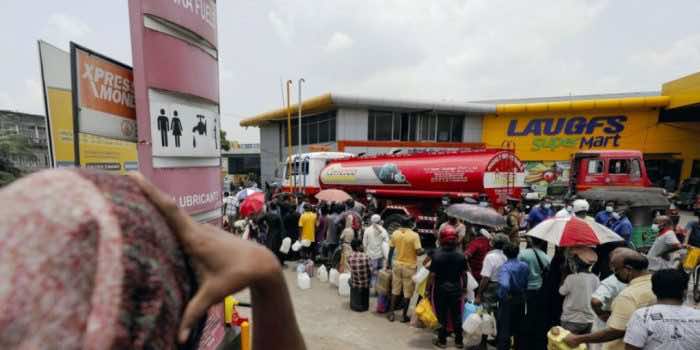Sri Lankans face a bleak future as the country suffers from its worst economic crisis in decades, resulting in more power outages and gloom. Because the government cannot pay for fuel imports due to a lack of foreign exchange, the country ran out of diesel on Thursday, leaving the island nation of 22 million people with rolling power outages lasting up to 13 hours a day.
The public blames the government for the country’s worst economic crisis since its independence in 1948. On Thursday night, hundreds of protesters marched through Colombo’s streets and gathered outside President Gotabaya Rajapaksa’s home to protest. They even tried to break into his house but were beaten back by armed guards.

Although gasoline was available, it was in short supply, compelling drivers to leave their vehicles in long waits. In addition, private bus companies said they were out of oil and that even skeleton services would not be available after Friday.
“We are siphoning off fuel from buses that are in the garage for repairs and using that diesel to operate serviceable vehicles,” Transport Minister Dilum Amunugama said.

Sri Lanka imposed a nationwide 10-hour daily power cut on Wednesday, March 30, up from the seven-hour power outage announced in the first week of March due to a lack of hydroelectricity. This quickly grew to 13 hours of total blackout as the country ran out of diesel.
According to operators, electricity rationing also affected mobile phone base stations, affecting call quality. According to reports, the supply disruptions have caused an uproar throughout Sri Lanka, with hundreds of motorists blocking major roads in several cities.
Several government hospitals have ceased operations due to a shortage of basic OTC drugs, and most diagnostic tests have been delayed due to supply shortages.
Colombo imposed a broad import ban in March 2020 to save foreign currency for the service of its $51 billion foreign debt. However, this has resulted in widespread shortages of essential goods and rapid price increases. Sri Lanka’s current economic crisis results from poorly timed tax breaks and inadequate project investment.
The Covid-19 pandemic was the death blow that exacerbated the crisis in Sri Lanka. Tourism, one of its major contributors, was severely impacted by the pandemic. Bringing the industry to an all-time low.

The government has stated that it will seek a bailout from the International Monetary Fund in addition to additional loans from India and China. However, Sri Lanka’s foreign debts have accumulated to unmanageable levels. The country now owes approximately USD 7 billion. The country’s public debt has risen from 94% of its GDP in 2019 to 119% of GDP in 2021, according to the International Monetary Fund (IMF) in early March.


